Arts & Entertainment
SPRING ARTS 2018 CLASSICAL: A new spin on Durufle’s ‘Requiem’
Gay Men’s Chorus director revoices famous work
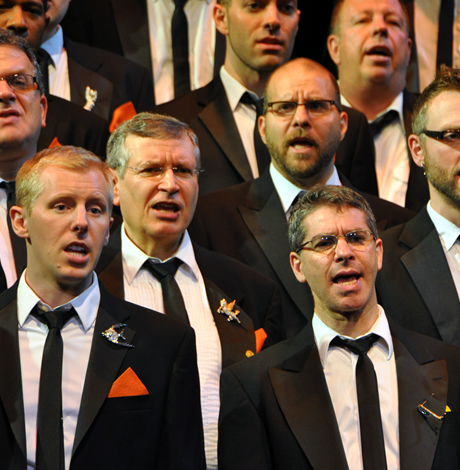
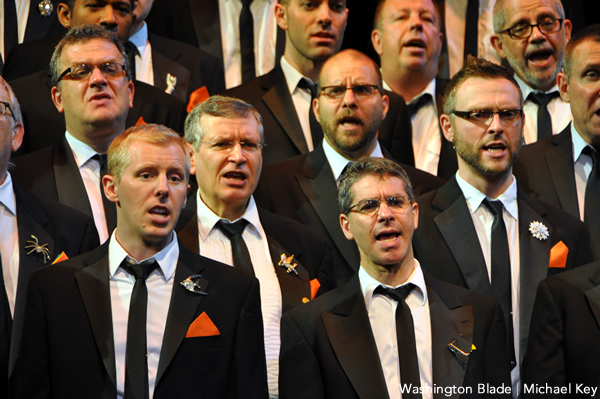
The Gay Men’s Chorus of Washington has a busy spring. Although the chorus has always interspersed classical selections in with its contemporary, more LGBT-themed material, it has done more classical major works in recent years. (Washington Blade file photo by Michael Key)
Classical music is funny when it comes to LGBT stuff — on one hand, it’s no big deal. Nobody cares if the talent is there. Yet sometimes it’s taken to such an absurd degree that it feels disingenuous. Or the artists sometimes feel talking about their personal lives will cheapen their art or dilute its impact in an arena where it’s not supposed to matter.
All that to say — comb through the classical spring concerts coming up and there’s very few LGBT themes or personnel to point to. And yet many folks active in that world say our regional orchestras, opera companies and choirs are just as healthily outfitted with gays as the rest of the city. Maybe not quite as high in number as, say, the uber-queer D.C. theater community, but not off by much. It’s anecdotal so yeah, take it with a grain of salt, but that’s what you go by when there are no hard numbers available.
The gayest classical concert this season by far comes from an unlikely source — our Gay Men’s Chorus. While their musical chops have never been questioned — they’re enjoying a rich new era under the direction of Artistic Director Thea Kano — the fact that they do so much Broadway, camp, music-with-a-message, pop covers, you name it really, folks who love the classical canon around here tend to gravitate to local choirs (and there are many) that stick to the traditional repertoire.
It’s even a “thing” in the chorus. Kano, with a chuckle, refers to the “SMQs” (i.e. “serious music queens”) in the massive choir. Those SMQs, she says, were giddy with delight when she told them one of their 2018 concerts was a new tenor/bass arrangement of Maurice Durufle’s “Requiem.” The Chorus performs it this weekend (Saturday, March 3) at 8 p.m. at the Church of the Epiphany (1317 G St., N.W.). Tickets are $60. Full details at gmcw.org.
Kano, as big an ally as it gets, was in her third year of graduate school at UCLA in 2003 working on an advanced conducting degree when she first became aware of the famous “Requiem,” or “Mass for the dead.” She and her mentoring professor were considering ideas for what she might do her dissertation on and he suggested the “Requiem.”
“He said the Durufle ‘Requiem’ and I was like, ‘The who, the what?,’” Kano says. “He said, ’Shame on you,’ and sent me home with a bunch of CDs. I put the first one in and was just moved to tears. There’s something just glorious about it.”
It did become her dissertation piece and longtime chorus accompanist Teddy Guerrant suggested she adapt it for tenor-and-bass chorus.
“He actually kept bugging me about it over the years,” Kano says.
She had contacts with the Durufle Association (the composer, who was straight, died in 1986; the “Requiem” premiered in 1947) and went to Paris last summer to do the work of actually transcribing the nine-movement, about 40-minute piece, a process she says was, yes, tedious at times, but a process akin to working on a crossword puzzle that she came to love.
Composed for soprano-alto-tenor-bass (SATB) chorus with occasional divisi, Kano adapted it for tenor 1, tenor 2, baritone and bass (TTBB) a process that in many cases was as simple as taking the soprano and alto parts down an octave, although that wasn’t feasible in all places. It’s in the same key as the original; the same orchestral and organ accompaniments Durufle wrote are being used. Soprano Breanna Sinclaire (a trans Baltimore native who’s making a name for herself as an opera soloist) will perform the fifth movement, “Pie Jesu.”
“There are some passages where the sopranos (in the original) have the melody and they’re up in the rafters but now it’s been assigned to the baritones and it’s … kind of more smushed in there so we had to really bring the other sections’ volumes down and bring the other up to make sure it’s voiced so that what is prominent stands out to the ear of the audience,” Kano says. “The first few times I heard it live in the TTBB, I was like, ‘Wow, this sounds like Durufle but different.’ We’ve been working on it about seven or eight weeks and I think it’s just glorious. The audience is in for a real treat.”
Kano was delighted that about 140 of the chorus’s 300 (give or take) members signed on for the concert (they’re not required to). She was concerned some members who enjoy the more camp/pop stuff might not be up for such a major work from the classical canon, although the chorus has in previous years done adaptations of major works such as the Faure “Requiem” and “Carmina Burana.”
Because the “Requiem” was written in a style based on Gregorian plainchant (traditionally sung by male singers), the TTBB version required no great musicological backflips. And Kano says the majesty of the piece transcends its Christian text. If it seems an odd choice for the chorus, which specializes in more rah-rah-gay-type contemporary repertoire (although they’ve always done classical works as well), Kano says it’s its own statement of equality.
“Just the fact that we’re out as an LGBT chorus standing there and singing anything, you know, the stereotype of what the classical snobby choruses can do, just shows that we can raise our voices any way we feel is appropriate for our abilities. It puts us on the map that yes, we can sing anything and hopefully the audience will agree.”
Chorus member Tim Gillham, a tenor who joined the group in 2014, had previously sung the “Requiem” in the traditional voicing and said it’s been “truly a joy” to rediscover it in Kano’s version.
“Thea’s treatment brings an added depth and warmth to the work, which is especially appropriate for a ‘Requiem,’” he says.
“It’s been a total treat to have Thea work us through the music sections and share and feel her true passion for the music,” says Ed Oseroff, a bass who’s been with the Chorus since 2000. “I hope the audience will sit back, relax and let the emotion and power of the music take them away.”
As usual, it’s a busy spring for the Chorus. Its “Make America Gay Again” concert is Saturday, March 17; small ensembles’ “Extravaganza” is Saturday, April 14 at the Barns at Wolf Trap and “Transamerica,” a show about trans issues that will also feature Sinclaire, is June 2-3. Full details at gmcw.org.

The fifth annual Fredericksburg Pride march and festival was held on Saturday, June 28. A march through the streets of downtown Fredericksburg, Va. was followed by a festival at Riverfront Park.
(Washington Blade photos by Michael Key)

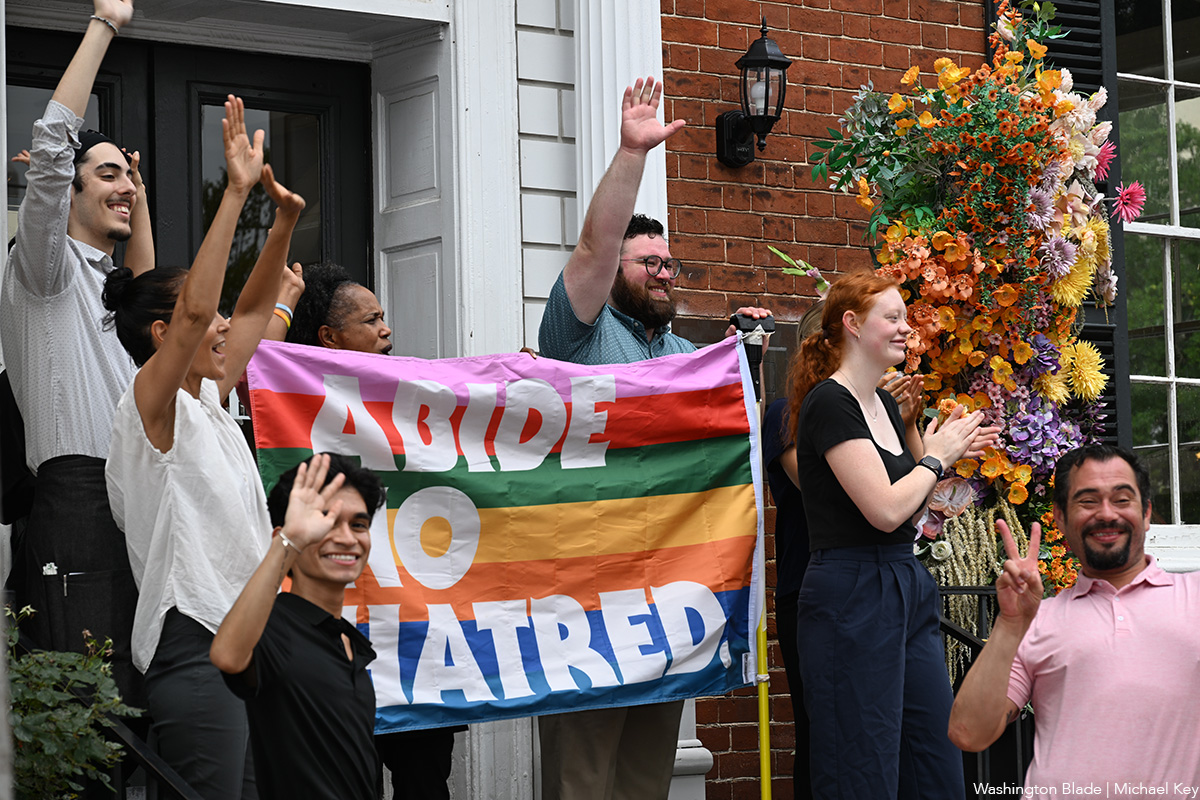
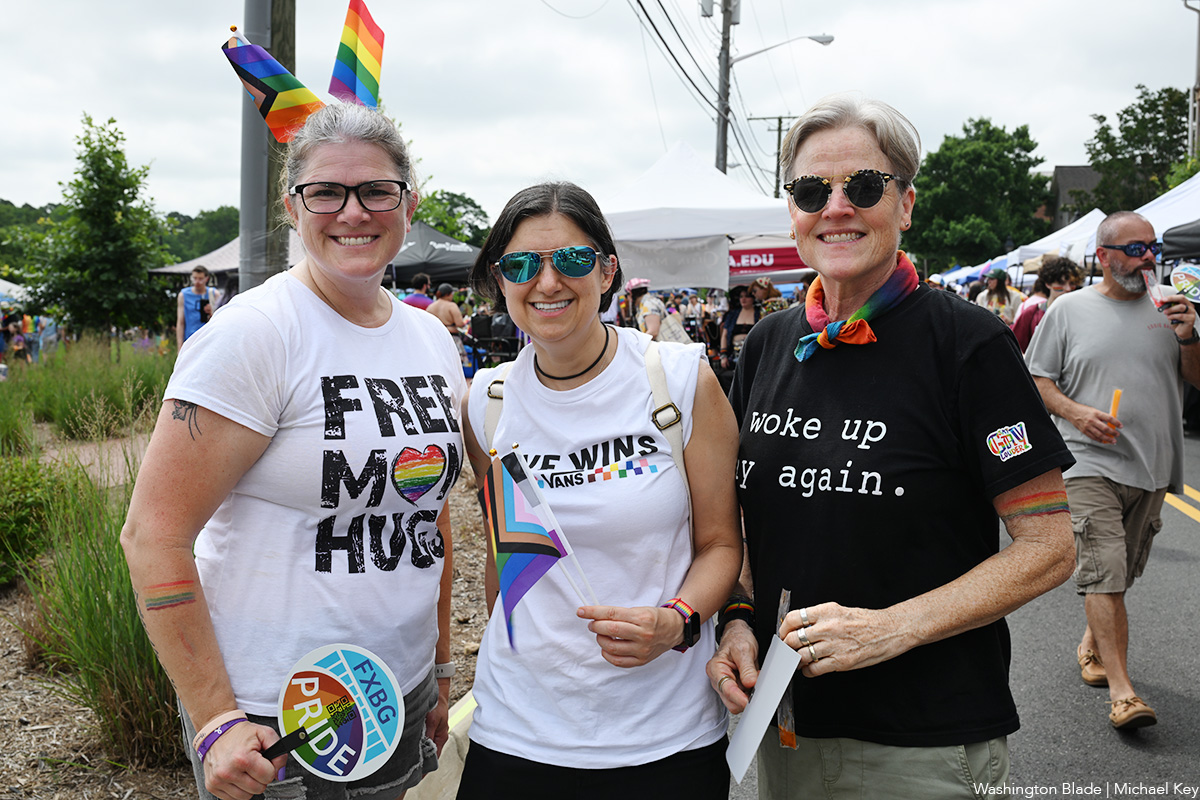
















India
Anaya Bangar challenges ban on trans women in female cricket teams
Former Indian cricketer Sanjay Bangar’s daughter has received support
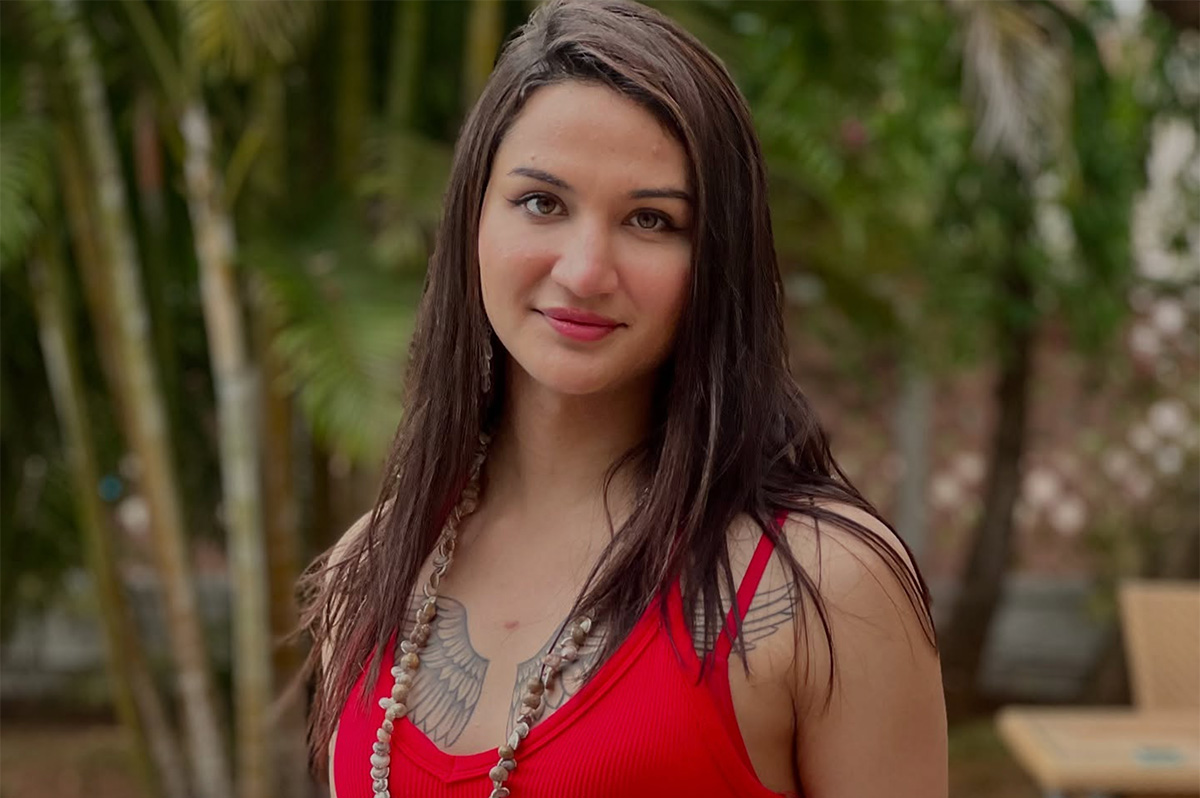
Anaya Bangar, the daughter of former Indian cricketer Sanjay Bangar, has partnered with the Manchester Metropolitan University Institute of Sport in the U.K. to assess her physiological profile following her gender-affirming surgery and undergoing hormone replacement therapy.
From January to March 2025, the 23-year-old underwent an eight-week research project that measured her glucose levels, oxygen uptake, muscle mass, strength, and endurance after extensive training.
The results, shared via Instagram, revealed her metrics align with those of cisgender female athletes, positioning her as eligible for women’s cricket under current scientific standards. Bangar’s findings challenge the International Cricket Council’s 2023 ban on transgender athletes in women’s cricket, prompting her to call for a science-based dialogue with the Board of Control for Cricket in India and the ICC to reform policies for transgender inclusion.
“I am talking with scientific evidence in my hand,” Bangar said in an interview posted to her Instagram page. “So, I hope, this makes an impact and I will be hoping to BCCI and ICC talking with me and discussing this further.”
On Nov. 21, 2023, the ICC enacted a controversial policy barring trans women from international women’s cricket. Finalized after a board meeting in Ahmedabad, India, the regulation prohibits any trans player who has experienced male puberty from competing, irrespective of gender-affirming surgery or hormone therapy. Developed through a 9-month consultation led by the ICC’s Medical Advisory Committee, the rule aims to safeguard the “integrity, safety, and fairness” of women’s cricket but has drawn criticism for excluding athletes like Canada’s Danielle McGahey, the first trans woman to play internationally. The policy, which allows domestic boards to set their own rules, is slated for review by November 2025.
Bangar shared a document on social media verifying her participation in a physiological study at the Manchester Metropolitan University Institute of Sport, conducted from Jan. 20 to March 3, 2025, focused on cricket performance. The report confirmed that her vital metrics — including haemoglobin, blood glucose, peak power, and mean power — aligned with those of cisgender female athletes. Initially, her fasting blood glucose measured 6.1 mmol/L, slightly above the typical non-diabetic range of 4.0–5.9 mmol/L, but subsequent tests showed it normalized, reinforcing the study’s findings that her physical profile meets female athletic standards.
“I am submitting this to the BCCI and ICC, with full transparency and hope,” said Bangar. “My only intention is to start a conversation based on facts not fear. To build space, not divide it.”
In a letter to the BCCI and the ICC, Bangar emphasized her test results from the Manchester Metropolitan University study. She explained that the research aimed to assess how hormone therapy had influenced her strength, stamina, haemoglobin, glucose levels, and overall performance, benchmarked directly against cisgender female athletic standards.
Bangar’s letter to the BCCI and the ICC clarified the Manchester study was not intended as a political statement but as a catalyst for a science-driven dialogue on fairness and inclusion in cricket. She emphasized the importance of prioritizing empirical data over assumptions to shape equitable policies for trans athletes in the sport.
Bangar urged the BCCI, the world’s most influential cricket authority, to initiate a formal dialogue on trans women’s inclusion in women’s cricket, rooted in medical science, performance metrics, and ethical fairness. She called for the exploration of eligibility pathways based on sport-specific criteria, such as haemoglobin thresholds, testosterone suppression timelines, and standardized performance testing. Additionally, she advocated for collaboration with experts, athletes, and legal advisors to develop policies that balance inclusivity with competitive integrity.
“I am releasing my report and story publicly not for sympathy, but for truth. Because inclusion does not mean ignoring fairness, it means measuring it, transparently and responsibly,” said Bangar in a letter to the BCCI. “I would deeply appreciate the opportunity to meet with you or a representative of the BCCI or ICC to present my findings, discuss possible policy pathways, and work towards a future where every athlete is evaluated based on real data, not outdated perceptions.”
Before her transition, Bangar competed for Islam Gymkhana in Mumbai and Hinckley Cricket Club in the U.K., showcasing her talent in domestic cricket circuits. Her father, Sanjay Bangar, was a dependable all-rounder for the Indian national cricket team from 2001 to 2004, playing 12 test matches and 15 One Day Internationals. He later served as a batting coach for the Indian team from 2014 to 2019, contributing to its strategic development.
Cricket in India is a cultural phenomenon, commanding a fanbase of more than 1 billion, with more than 80 percent of global cricket viewership originating from the country.
The International Cricket Council, the sport’s governing body, oversees 12 full member nations and more than 90 associate members, with the U.S. recently gaining associate member status in 2019 and co-hosting the 2024 ICC Men’s T20 World Cup. The BCCI generated approximately $2.25 billion in revenue in the 2023–24 financial year, primarily from the Indian Premier League, bilateral series, and ICC revenue sharing. The ICC earns over $3 billion from media rights in India alone for the 2024–27 cycle, contributing nearly 90 percent of its global media rights revenue, with the BCCI receiving 38.5 percent of the ICC’s annual earnings, approximately $231 million per year.
Women’s cricket in India enjoys a growing fanbase, with over 300 million viewers for the Women’s Premier League in 2024, making it a significant driver of the sport’s global popularity. The International Cricket Council oversees women’s cricket in 12 full member nations and over 90 associate members, with the U.S. fielding a women’s team since gaining associate status in 2019 and competing in ICC events like the 2024 Women’s T20 World Cup qualifiers. The BCCI invests heavily in women’s cricket, allocating approximately $60 million annually to the WPL and domestic programs in 2024–25, while contributing to the ICC’s $20 million budget for women’s cricket development globally. India’s media market for women’s cricket, including WPL broadcasting rights, generated $120 million in 2024, accounting for over 50 percent of the ICC’s women’s cricket media revenue.
“As a woman, I feel when someone says that they are women, then they are, be trans or cis. A trans woman is definitely the same as a cis woman emotionally and in vitals, and specially, when someone is on hormone replacement therapy. Stopping Anaya Bangar from playing is discrimination and violation of her rights. It is really sad and painful that every transwoman need to fight and prove their identity everywhere,” said Indrani Chakraborty, an LGBTQ rights activist and a mother of a trans woman. “If ICC and BCCI is stopping her from playing for being transgender, then I will say this to be their lack of awareness and of course the social mindsets which deny acceptance.”
Chakraborty told the Blade that Bangar is an asset, no matter what. She said that the women’s cricket team will only benefit by participation, but the discriminating policies are the hindrance.
“Actually the transgender community face such discrimination in every sphere. In spite of being potent, they face rejection. This is highly inhuman. These attitudes is regressive and will never let to prosper. Are we really in 2025?,” said Chakraborty. “We, our mindset and the society are the issues. We, as a whole, need to get aware and have to come together for getting justice for Anaya. If today, we remain silent, the entire community will be oppressed. Proper knowledge of gender issues need to be understood.”
The BCCI and the International Cricket Council have not responded to the Blade’s repeated requests for comment.
Theater
‘Andy Warhol in Iran’ a charming look at intersection of art, politics
Mosaic production plumbs kidnapping plot of iconic artist for humor
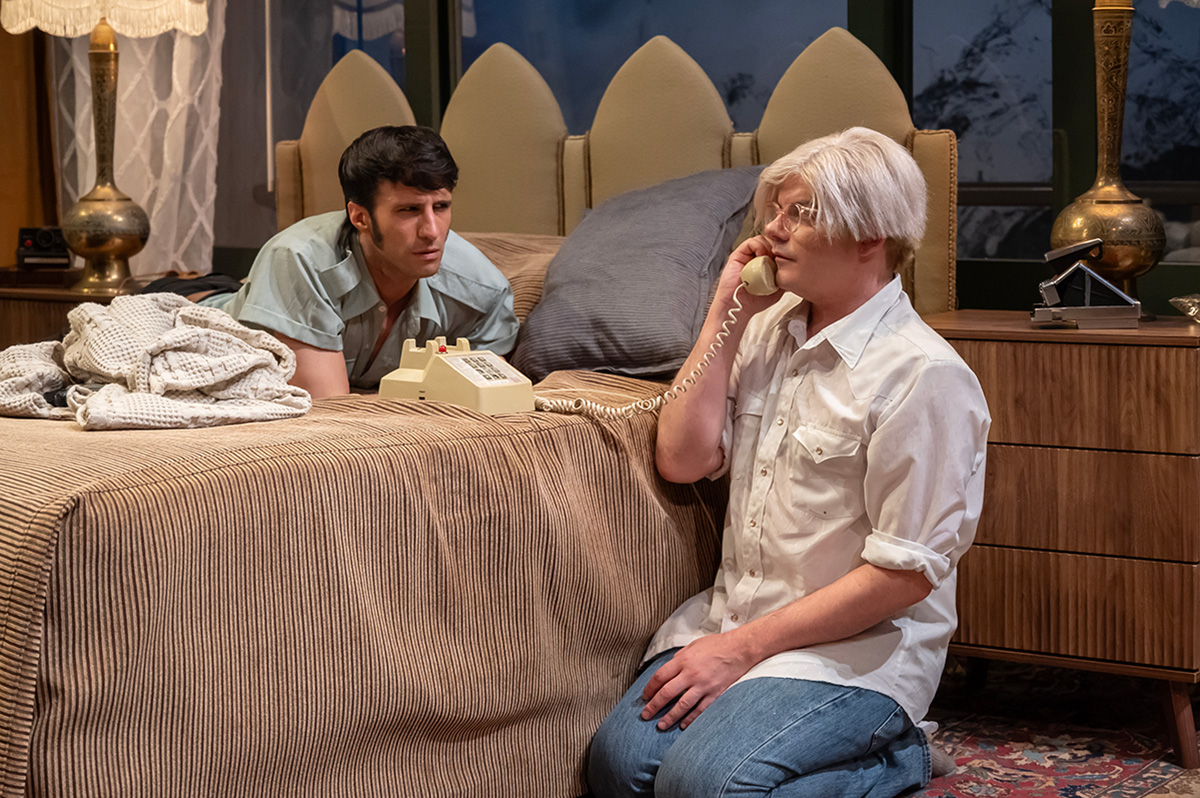
‘Andy Warhol in Iran’
Through July 6
Mosaic Theater Company at Atlas Performing Arts Center
1333 H St., N.E., WDC
$70
Mosaictheater.org
Behind the blasé veneer, Andy Warhol was more curious than people knew. Particularly when it came to money. He kept a close eye on how the ultra-rich lived, what fellow artists were being paid and who was paying them, and, of course, all the new and more saleable ways of making and selling art.
In playwright Brent Askari’s “Andy Warhol in Iran,” now playing at Mosaic Theater Company, Warhol (Alex Mills) is brought outside of his usual area of interest when he lands face to face with a young revolutionary. While Warhol could be artistically revolutionary, he didn’t connect with the idea of forgoing the pursuit of money and fame for the infinitely more difficult task of achieving social justice.
The 90-minute play is not fully factual, but rather inspired by Warhol’s real life 1976 trip to Tehran to make portraits of the royal Pahlavi family in the waning days of their reign, with a focus on Farah Diba, the Shah’s elegant wife and Iran’s last empress.
The action unfolds in a Tehran hotel suite boasting a glorious view of the snowcapped Alborz Mountains not far from Iran’s vibrant and bustling capital. It’s here, disguised as room service, that Farhad (played by Nathan Mohebbi) gains entrance to Warhol’s rooms, seeking to kidnap the pop art star to garner attention for the university students’ movement.
Warhol meets the armed intruder with a sort of wide-eyed wonderment, flummoxed why he has been selected for abduction. Warhol can’t understand why a young man like Farhad wouldn’t prefer to be paid a big ransom on the spot, or be cast as a star in one of the Warhol Factory flicks.
When Farhad replies it’s because Warhol is the most decadent artist in the world, Warhol mistakenly takes it for the ultimate compliment. After all, his biggest successes had been connected to celebrity and consumerism (think Campbell’s Soup Cans. 1962).
For Warhol, decadence is aspirational. He made portraits of financiers, movie stars, and jet setters. In fact, he’d been obsessed with the lives of the rich and famous since he was a small kid in Pittsburgh thumbing through Photoplay Magazine while bed bound with Saint Vitus Dance.
Accompanying Warhol to Tehran (unseen) are his business manager Fred Hughes, and Bob Colacello, editor of Interview magazine. Together, they make a merry trio of gay social climbers. These kinds of trips were a boon to the artist. Not only did they solidify a new strata of high society contacts, but were also superbly lucrative, thickly padding the painter’s pockets.
While in Iran, Warhol wanted only to view Farah’s vast world-class collection of jewels, sample the caviar on tap, and get his Polaroids. Then he’d fly first class back to New York and transfer the images to silk screen and sell the portraits to the Persian royals at a hefty price. He didn’t foresee any obstacles along the way.
Serge Seiden’s direction is spot on. He’s rendered a wonderfully even two-hander with a pair of terrifically cast actors. And Seiden plumbs the piece for humor mostly drawn from the absurdity of the situation without missing any of the serious bits.
As Warhol, out actor Mills is instantly recognizable as the eccentric artist. He’s wearing the button-down shirt, jeans, blazer, glasses, and, of course the famed shock of white hair wig (here a little more Karen than Andy). His portrayal is better than an imitation. He gives a bit of the fey and confused, but has also infuses him with a certain dynamism.
The energy works well with the intensity of Mohebbi’s would-be kidnapper Farhad. And while it isn’t a romance, it’s not impossible to think that Warhol might fall for a handsome male captor.
The connection between art and politics is almost always interesting; and though not a super deep dive into the era or the life of an artist, “Andy Warhol in Iran” is a compelling, charming, and sometimes funny glimpse into that intersection.
-

 U.S. Supreme Court3 days ago
U.S. Supreme Court3 days agoSupreme Court upholds ACA rule that makes PrEP, other preventative care free
-

 U.S. Supreme Court3 days ago
U.S. Supreme Court3 days agoSupreme Court rules parents must have option to opt children out of LGBTQ-specific lessons
-

 India5 days ago
India5 days agoIndian court rules a transgender woman is a woman
-

 National4 days ago
National4 days agoEvan Wolfson on the 10-year legacy of marriage equality












